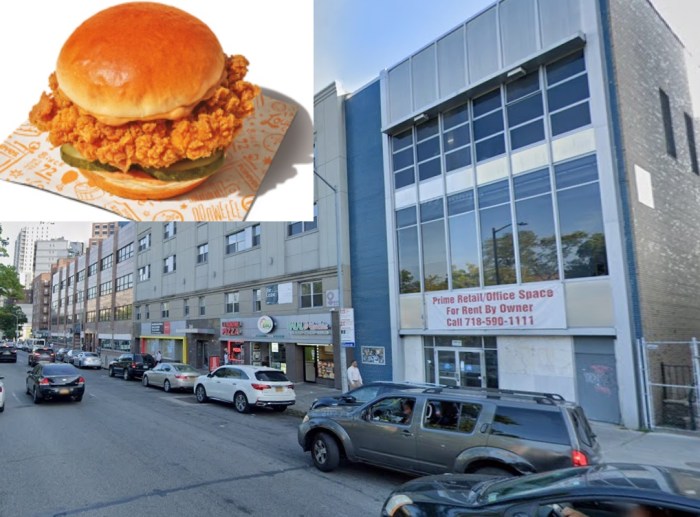With the City Council poised to vote Thursday on the controversial land use plan to build borough-based jails in order to close Rikers Island, a new deal has been struck.
Councilwoman Karen Koslowitz, Speaker Corey Johnson and council members representing Brooklyn, the Bronx and Manhattan — where the new jails have been proposed — announced Tuesday that the new borough-based facilities will be reduced by an average of 90 feet, which is equivalent to nine floors.
The deal was reached as a result of the expected drop in the average daily jail population, community engagement and design-efficient improvements. The maximum height for each facility will be significantly reduced from its original plan; the first proposal called for jail towers ranging from a 450 feet height to 245 feet, but the new proposal ranges from a maximum 0f 295 feet to 195 feet.
In Kew Gardens, where Community Board 9 voted unanimously against the plan to build a new jail at the old Queens Detention Center, the revised proposal reduces the building from 270 feet to 195 feet, and from 27 floors to 19.
“The last several months I have been adamant that the proposed size of the borough-based jail in Kew Gardens needed to be significantly reduced,” Koslowitz said. “As a result of difficult negotiations with the administration, I am pleased to have reduced the height of the facility by close to 100 feet, and cut the number of beds that the facility will house nearly in half.”
The design changes are in response to the blowback raised by the four communities that will host the jails during a difficult public review process, which for the first time featured different sites in four boroughs..
“The administration’s commitment to reducing the height of the four planned borough-based jails is another step in the right direction,” said Councilwoman Adrienne Adam, chair of the Subcommittee on Landmarks, Public Sitings and Dispositions. “This revised plan will only reduce capacity but will allow the facilities to better integrate with the surrounding neighborhoods.”
The original facilities were designed with expected average daily populations of 5,000 by 2026, but that estimate is down to 3,300, a new figure which will mark the lowest jail population in New York City in a century.
“Just a few years ago, the Lippman Commission’s projection of a 5,000 average daily population was considered to be overly optimistic,” Johnson said. “To now reach 3,300 is an extraordinary achievement, and the culmination of years of hard work to move away from the failed policies of mass incarceration, But we will not rest. We will keep fighting to bring this number down even further. New York City should be a model of progressive criminal justice reform nationwide.”
The reduction in the scale of the jails working in conjunction with the steady drop in prisons populations likely means a 26-vote majoring on the plan paving the way for the closing of the Rikers Island prison complex.
“Having a jail population of less than 4,000 people was considered unthinkable in New York City just five years ago, but the work of legislators, advocates, criminal justice experts and the NYPD in New York has made the impossible possible,” said Councilman Donovan Richards, the chair of the Committee on Public Safety. “Focusing on keeping nonviolent offenders out of jail, investing in communities and making a serious commitment to vocational training and programming will help us reach that reality. This is only the start of the work that needs to be put in to reform a horrible system that led to the loss of too many lives and turned minor offenders into lifelong victims of the criminal justice system. I look forward to continuing the work needed to ensure that these plans are executed responsibly and compassionately by 2026.”




































